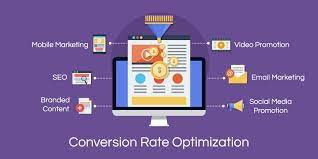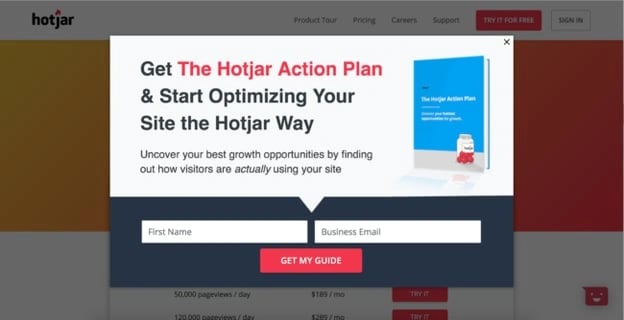Conversion Rate Optimization Services Using Email Marketing: A Game-Changer for Businesses
April 25, 2025
Ron

Email marketing remains a force to be reckoned with, even in an age brimming with social media platforms, chatbots, personalized emails, and new-age advertising channels. The magic of emails lies in their directness, their potential personalization, and the intimacy of inboxes. But what’s even more captivating is the potential of combining email marketing strategies with Conversion Rate Optimization (CRO) services. Together, they promise not just to knock on the doors of potential customers, but to invite themselves in, make a lasting impression, and drive actions.
What is Conversion Rate Optimization?
Before delving into more leads the nexus of email, the mobile devices, users and CRO, let’s demystify CRO. In simplest terms, CRO is the process of optimizing your website or marketing campaigns to increase the percentage of visitors that convert into customers or complete a desired action.
Why Combine Email Marketing with CRO?
- Personalization: One of the prime benefits of email marketing is the ability to send personalized messages. With CRO insights, this personalization can be fine tuned to resonate with individual user behaviors and preferences.
- Segmentation: Not all subscribers are the same. CRO services can help you segment your email list based on various criteria (like purchase behavior, website activity, etc.), ensuring that your campaigns are laser-targeted.
- Feedback Loop: Email campaigns give immediate feedback. Whether it’s open rates, click-through rates, or conversion metrics, these numbers can be directly fed into a CRO strategy to test and optimize future campaigns.
How to Optimize Conversion Rates in Email Marketing?
- Optimize the Subject Line: This is the first touchpoint. A compelling, curiosity-inducing subject line can make all the difference between an opened email and one that’s doomed to the trash bin. Use A/B testing to find out what works best for your audience.
- Responsive Design: Ensure that emails are mobile-friendly. A significant portion of users might access emails from mobile devices. If they can’t read or interact with it comfortably, you’ve lost a potential conversion.
- Clear Call-to-Action (CTA): What do you want the reader to do? Whether it’s to “Shop Now”, “Learn More”, or “Get a Free Trial”, ensure the CTA is clear, compelling, and ideally placed at least twice in the email.
- Engaging Content: This might be graphics, videos, or plain text. The content should resonate with the reader’s interests and needs. Tailoring content based on segmentation can be very effective here.
- Landing Page Consistency: The transition from the email to a landing page should be seamless in terms of design, messaging, and intent. A mismatch can lead to drop-offs.
- Automated Follow-Ups: Sometimes, one email isn’t enough. Using automation, you can set up a series of follow-up emails for users who didn’t convert the first time.
How to Increase Conversion Rate in Email Marketing

Email marketing is one of the most effective digital marketing channels for engaging with your target audience and driving conversions. However, simply using email service providers sending out emails to your subscribers is not enough to drive the results you need. In order for email campaigns to be successful, you need to be strategic about how you use email marketing and optimize your approach to maximize conversions.
Email marketing campaigns are a powerful tool in the arsenal of digital marketers. When executed correctly, they can foster brand loyalty, drive sales, increase conversions, and help businesses connect with their customers on a personal level. Below is a breakdown of email marketing conversion rates, the components, types, best practices, and tips for running a successful email marketing campaign.
Components of an Email Marketing Campaign:

- Audience Segmentation: Divide your email list based on certain criteria, such as purchase history, location, or behavior on your website.
- Email Design: Design your emails to be visually appealing and mobile-responsive.
- Compelling Content: From the subject line to the body copy, your content should engage the reader and prompt them to take action.
- Clear CTA (Call-To-Action): Direct the reader on what they should do next, be it purchasing a product, reading a blog post, or signing up for a webinar.
- Landing Pages: If your email directs users to a webpage, ensure it’s relevant and cohesive with the email content.
- Analytics and Tracking: Monitor key metrics such as open rates, click-through rates, and conversion rates to measure the effectiveness of your campaign.
Types of Email Marketing Campaigns:
- Newsletter: Regular updates sent to subscribers, often containing company news, blog posts, or product features.
- Promotional Campaigns: Emails focused on promoting a sale, product launch, or special offer.
- Drip Campaigns: A series of emails automatically sent based on specific timelines or user actions.
- Transactional Emails: Triggered by a user’s action like account creation, purchase confirmation, or password reset.
- Re-engagement Campaigns: Aimed at re-engaging subscribers who haven’t interacted with your emails or brand in a while.
Best Practices:
- Permission-Based Marketing: Always obtain consent before sending emails, usually through opt-in mechanisms.
- Personalization: Tailor your emails to the recipient’s preferences and behavior. This can significantly boost engagement.
- A/B Testing: Test different versions of your emails (e.g., subject lines, images, CTAs) to see which ones perform better.
- Consistency: Send emails at consistent intervals. Too few and subscribers might forget about you; too many, and they might find it annoying.
- Clean Your Email List: Regularly remove unengaged subscribers to maintain a high-quality list.
Tips for a Successful Campaign:
- Start with Clear Goals: Determine what you want to achieve – higher sales, more website traffic, increased brand awareness.
- Use Email Automation Tools: Platforms like Mailchimp, HubSpot, or SendinBlue can automate campaigns, segment your audience, and provide detailed analytics.
- Optimize for Mobile: With a significant portion of emails being opened on mobile devices, ensure your email design is mobile-friendly.
- Include Social Media Links: Allow subscribers to connect with your brand across different platforms.
- Monitor and Adjust: Use analytics to see what’s working and what’s not. Tweak your strategies accordingly.
Mobile Devices Optimization: Ensuring Impact Across Devices
Tailoring Length and Content for Mobile Screens
Mobile devices dominate email consumption, making mobile optimization imperative. Craft subject lines that remain impactful even on smaller mobile device screens, and ensure that relevant content within the subject lines core message is visible without the need for scrolling.
Crafting Compelling Subject Line: Your Key to Unlocking Inbox Success
In the realm of email marketing, the subject line holds an undeniable power. It’s your digital storefront, the first impression that determines whether your email is opened or relegated to the depths of the spam folder. Crafting a compelling email subject line and line is an art that requires a delicate balance of creativity and strategy.
Conversion Rate Optimization Strategies
Conversion Rate Optimization (CRO) or conversion rate optimization strategies are approaches and tactics used by businesses to improve the percentage of website visitors who take a desired action, such as signing up for a newsletter, downloading an e-book, or making a purchase. Implementing CRO strategies can significantly enhance the effectiveness of a website by email marketing conversion rates and turning more passive visitors into active users or customers. Here are some key CRO strategies:
Conversion Rate Optimization Tools
Conversion Rate Optimization (CRO) tools play a crucial role in refining the user experience on websites and maximizing the potential of every visitor. These tools provide insights into user behavior, facilitate testing of different page elements, encourage conversions, and offer data-backed recommendations to improve a site’s conversion rate and keep conversion rates up. Here’s a roundup of some of the top CRO tools available:
- Google Analytics:
- A comprehensive analytics platform that tracks user behavior, acquisition channels, and user flow throughout your site. It’s an essential tool for understanding where and why potential conversions are dropping off.
- Optimizely:
- A platform for A/B testing, multivariate testing, and split URL testing. It allows you to experiment with different versions of your web pages to see which one drives more conversions.
- Hotjar:
- Provides heatmaps, session recordings, and surveys. You can visualize where users click, scroll, and how they navigate through your site.
- Crazy Egg:
- Another heatmap tool that shows where users are clicking, scrolling, and interacting with your web pages. It also offers A/B testing functionality.
- Unbounce:
- A landing page builder with built-in A/B testing functionality. It’s designed to help you create and test high-converting landing pages.
- VWO (Visual Website Optimizer):
- A comprehensive CRO platform offering A/B testing, split URL testing, multivariate testing, and more. It also has built-in heatmaps and session recordings.
- Convert:
- A robust A/B testing tool that integrates with Google Analytics and other platforms, allowing for in-depth data analysis.
- FullStory:
- Provides session replay to see exactly how users are interacting with your site, helping identify usability issues or bottlenecks in the user journey.
- Qualaroo:
- A survey tool that lets you gather feedback directly from your users. You can ask specific questions to understand why users are or aren’t converting.
- SurveyMonkey:
- One of the most popular survey platforms, allowing you to gather user feedback, which can be crucial for CRO.
- UsabilityHub:
- Allows you to get feedback on designs, mockups, and landing pages before they go live. It can help you validate design choices with real users.
- PageSpeed Insights:
- A free tool by Google that analyzes the content of a web page and provides suggestions to make it load faster, enhancing user experience.
- Mouseflow:
- Offers heatmaps, session replays, funnels, and form analytics, giving you insights into user behavior and potential friction points.
- Kissmetrics:
- Focuses on tracking individual users throughout their lifecycle on your website, helping you understand the entire user journey.
- Pingdom:
- Monitors website speed and performance. A faster website often translates to better user experience and higher conversions.
Choosing the right CRO tools depends on your specific needs, the complexity of your website, and your budget. Many of these tools offer free trials or basic versions, so it’s advisable to experiment and see which ones align best with your business goals and objectives. Remember, the ultimate goal is to understand your users better and to refine their on-site experience, driving them towards your desired actions.
Promotional Emails
Promotional emails are email campaigns designed to inform subscribers about offers, sales, new product launches, or other initiatives that aim to drive sales and enhance brand engagement. These emails can be an integral part of a brand’s digital marketing strategy, driving traffic and conversions.
Components of an Effective Promotional Email:
- Engaging Subject Line: It should grab the reader’s attention and give an idea about the email’s content.
- Compelling Visuals: High-quality images or graphics that align with the promotion.
- Clear and Concise Copy: The message should be straightforward and highlight the value of the offer.
- Call to Action (CTA): A clear directive, like “Shop Now,” “Learn More,” or “Grab Your Discount.”
- Personalization: Using the subscriber’s name or tailoring content based on past behaviors can make the email more relevant.
- Urgency Indicators: Phrases like “Limited Time” or “Only a Few Left” can encourage immediate action.
- Mobile Optimization: Ensure the email displays correctly on mobile devices, given the growing number of users who check emails on their phones.
- Social Sharing Buttons: Allow subscribers to share the promotion on their social channels.
Unveiling the Sales Funnel’s Role in Conversions
At the heart of every successful sales journey lies the sales funnel – a meticulously designed pathway that transforms strangers into loyal customers. As prospects move through its stages, businesses wield strategic techniques to engage, educate, and ultimately persuade, guiding prospects towards the final destination: conversion.
Understanding the Basics of Email Marketing Conversion Rates
Conversion rate is a key metric that measures the percentage of email recipients who take a desired action, such as making a purchase, filling out a form, or clicking a link within the email. To calculate your conversion rate, divide the number of conversions by the number of emails sent, and multiply by 100 to get the conversion goal as a percentage.
Conversion Rate = (Number of Conversions / Number of Emails Sent) x 100
For example, if you sent out 10,000 emails and received 200 conversions, your conversion rate would be 2%.
Conversion Rate = (200 / 10,000) x 100 = 2%
However, there are other types of performance rates that you may want to track depending on your goals and objectives. These Include:
- Click-Through Rate (CTR): The percentage of email recipients who click on a link within the email. This metric can help you measure the effectiveness of your email content and CTAs.
CTR = (Number of Clicks / Number of Emails Sent) x 100
- Open Rate: The percentage of email recipients who open your email. This metric can help you measure the effectiveness of your subject lines and email preview text.
Open Rate = (Number of Emails Opened / Number of Emails Sent) x 100
- Conversion Rate by Source: The percentage of conversions that can be attributed to a specific source, such as a particular email campaign or landing page. This metric can help you determine which sources are most effective at driving conversions.
Conversion Rate by Source = (Number of Conversions / Number of Clicks) x 100%
How to Calculate Conversion Rate

Conversion rate is calculated by dividing the number of conversions by the number of visitors and multiplying that number by 100 to get a percentage.
As long as you know how you’re defining a good conversion rate, then calculating your conversion rate is easy. You just plug in two values and multiply by 100.
Let’s say you’re defining a conversion as a newsletter opt-in, and you have an opt-in form on every single page of your email campaign website.
In that case, you’d divide the total number of newsletter form submissions by the total number of website visitors and multiply it by 100. So if you had 500 submissions and 20,000 visitors last quarter, then your conversion rate would be 2.5%.
You can repeat this process for every conversion opportunity on your site. Just make sure to only count the number of visitors on the webpages where the offer is listed.
For example, if you want to calculate the conversion rate of your ebook offer, then you’d divide the total number of downloads by the number of people who visited web pages where the ebook offer is listed.
Alternatively, you can calculate your website’s overall conversion rate by dividing the total number of conversions for every conversion opportunity on your site by the total number of visitors on your site.
CRO and SEO
Search engine optimization is the process of improving your website’s visibility on search engine results pages (SERPs) in order to boost organic traffic and sales.
And as mentioned before, CRO focuses on improving your website’s performance to turn visitors into customers and boost conversions. Both CRO and SEO have the end goal of increasing sales — just different approaches.
Ultimately, you set your brand up for success when you optimize your website to be more visible on popular search platforms and when you improve your website or web page’s functionality to encourage conversions.
Where to Implement a CRO Strategy
Here are four areas of your website that have the potential to largely benefit from your conversion rate optimization tools.
1. Homepage
Homepages are prime candidates for CRO. In addition to making a first impression on visitors, the homepage is also an opportunity to retain those visitors and guide them further into your website.
You can do this by emphasizing links to product information, offering a free signup button, or even incorporating a chatbot that solicits questions from visitors at any point during their browsing experience.
2. Pricing Page

A website’s pricing page can be the make-or-break point for many website visitors.
CRO can help a pricing page convert visitors into customers by modifying the pricing intervals (e.g. price-per-year vs. price-per-month), describing the product features associated with each price, including a phone number for visitors to call for a price quote, or adding a simple pop-up form.
3. Blog
A blog is a massive conversion opportunity for a website. In addition to publishing thoughtful, relevant emails and helpful content about your industry, a blog can use CRO to convert readers into leads.
This process often includes adding calls-to-action (CTA) throughout an article or email message, inviting readers to learn more about a topic by submitting their email address in exchange for an ebook or industry report.
4. Landing Pages
Since landing pages are inherently designed for people to take an action, it makes sense that they have the highest average conversion rate of all signup forms at 23%.
An event landing page, for example, can be optimized with a video of last year’s event to encourage visitors to register this year. A landing page email content that’s offering a free resource can be optimized with preview content from that resource to encourage visitors to download it.
Now that you know where you can optimize for conversions, you may be wondering how you know when your business is ready to start the process.
In Conclusion
Email marketing, when synergized with CRO services, can be a potent tool in a marketer’s arsenal. It combines the precision of targeted messaging with the adaptability of optimization strategies. As businesses vie for consumer attention in the crowded digital space, this combination might just be the key to unlocking unparalleled engagement and conversion rates for your email marketing conversion efforts. So, if you haven’t started integrating CRO principles into your email marketing campaigns, now’s the time!
What it’s Like to work with Underground Ecom?

$1.9M
EMAIL MARKETING REVENUE
287%
Increase in
Revenue

37% OF REVENUE THROUGH EMAIL MARKETING

$1.9M
EMAIL MARKETING REVENUE
287%
Increase in
Revenue

37% OF REVENUE THROUGH EMAIL MARKETING